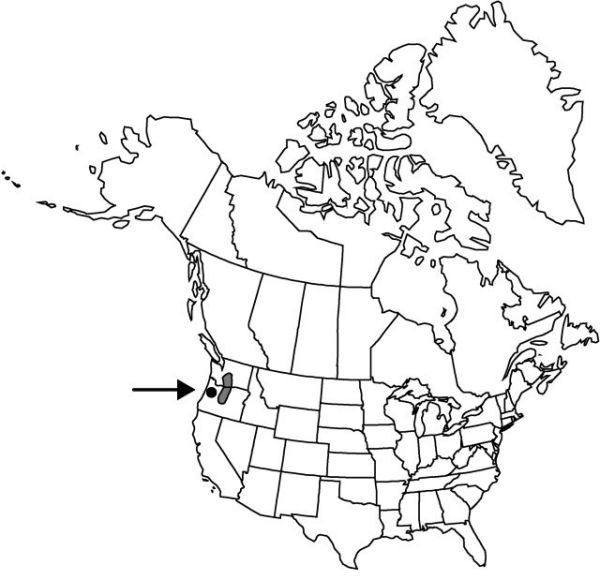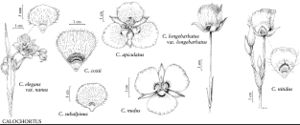Calochortus subalpinus
Contr. U.S. Natl. Herb. 11: 195. 1906.
Stems usually not branching, straight or flexuous, often scapelike, 0.5–3 dm. Leaves: basal 1–3 dm × 2–15 mm, usually equaling or exceeding stem length; blade flat, adaxial surface glabrous. Inflorescences subumbellate, 1–5-flowered; bracts 2–several, lanceolate to linear, unequal, 1–5 cm, apex acuminate; peduncle slender, becoming stouter, deflexed in fruit. Flowers erect or spreading; perianth open, campanulate; sepals typically with purple glandular blotch near base, oblong-lanceolate, shorter than petals, adaxial surface minutely hairy, apex acute to acuminate; petals yellowish white, sometimes lavender-tinged, frequently with narrow purple crescent distal to gland, broadly obovate, cuneate, moderately bearded nearly to apex, adaxial surface densely hairy, margins fringed, apex obtuse or acute; glands transversely oblong, arched upward, ± deeply depressed, bordered proximally by narrow, ascending, deeply fringed membrane, distally by narrow, crenate membranes, gland surface with rather long, slender hairs toward distal portion; anthers lanceolate, apex long-apiculate. Capsules nodding, 3-winged, ellipsoid, apex usually acute. Seeds pale yellow. 2n = 20.
Phenology: Flowering summer.
Habitat: Open forest in loose volcanic soils
Elevation: 1000–2200 m
Distribution

Oreg., Wash.
Discussion
Selected References
None.
